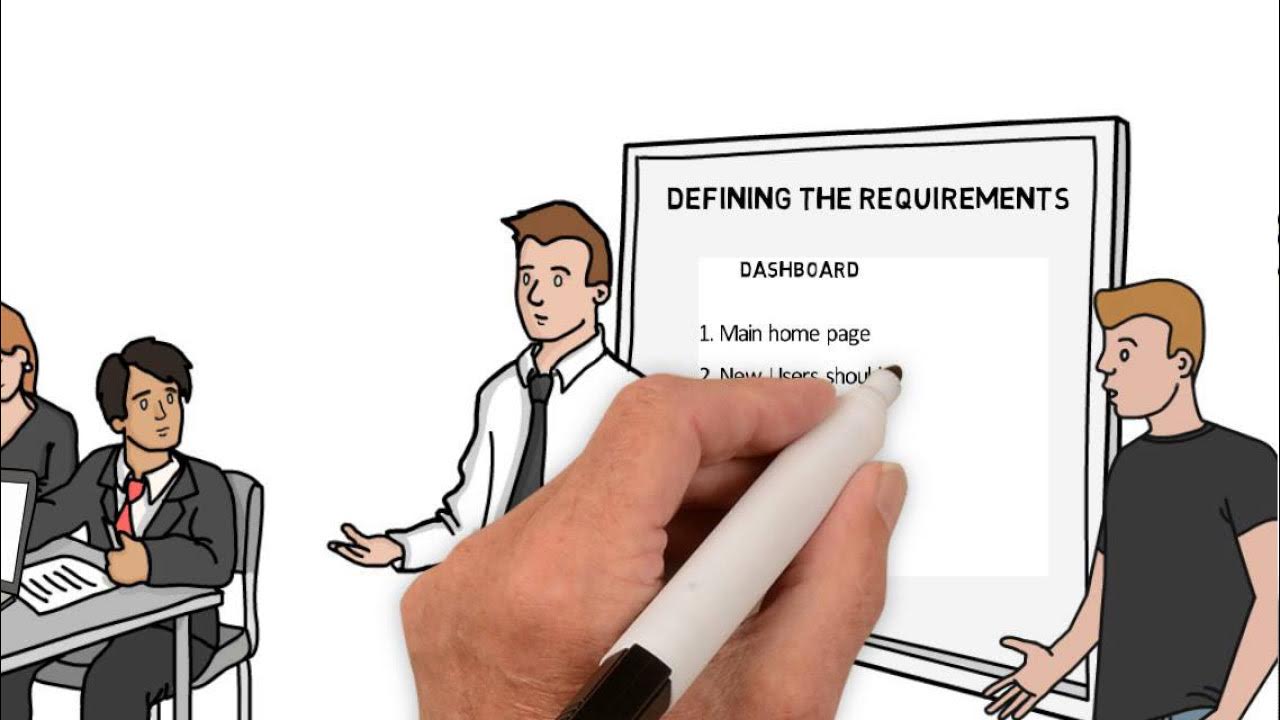SDLC Implementation Phase | SDLC life cycle tutorial for beginners | SDLC in software engineering
Summary
TLDRThis video covers the implementation phase of the software development lifecycle, where the development team builds the system in small, testable modules. It explains how individual modules are coded, unit tested, and integrated into the larger system, with automated builds ensuring consistency. The development team works with build scripts, source control management (SCM) systems, and test environments to ensure a smooth process. It also discusses the role of the QA team in preparing for validation and how engineering software is delivered for testing. The importance of version control, baselines, and test cases is emphasized to ensure software quality and compliance.
Takeaways
- 😀 The implementation phase is the longest in the software development lifecycle, focusing on creating the software in small modules and integrating them progressively.
- 😀 Development teams work with design documents and diagrams to guide the implementation of the software, with each engineer working on their assigned module.
- 😀 Unit tests are used to verify each unit of code before it is integrated into the system, ensuring correctness and functionality.
- 😀 Build scripts automate the compilation and linking of the software to ensure consistency across different developers and environments.
- 😀 Regular automated builds help identify integration issues early by merging individual code modules into a single system.
- 😀 The system integration environment tests how well the individual modules work together, using test databases and sometimes mocked-up modules for missing external systems.
- 😀 Besides functional testing, the system integration environment is also used for performance and stress testing to meet system-level agreements.
- 😀 Software that is integrated and tested by the development team is known as 'engineering software,' but it has not yet been independently verified by the QA team.
- 😀 The quality assurance (QA) team prepares for validation by setting up test environments and creating test cases that trace back to the software requirements.
- 😀 The software configuration management (SCM) system tracks changes to source files, ensuring that the exact version of the code can be recreated, including baselines for delivery to QA.
- 😀 Documentation created by developers during the implementation phase is stored in the source code itself as comments, helping future developers understand the code structure and revisions.
Q & A
What is the implementation phase in the software development lifecycle?
-The implementation phase is the longest phase in the software development lifecycle, where the development team creates the software by coding and testing small modules, which are then integrated into a complete system.
How does the development team begin the software creation process during the implementation phase?
-The development team begins by creating small modules in their private development environments, ensuring that each module is unit tested before being integrated into the larger system.
What role do unit tests play in the implementation phase?
-Unit tests are small, standalone applications designed to test individual units of code, ensuring they function as expected before integration into the larger system.
How do build scripts contribute to the implementation phase?
-Build scripts control the compilation and linking of source code into executable components, ensuring the software is consistently built the same way and can be integrated multiple times a day.
Why are automated builds a best practice in the implementation phase?
-Automated builds help identify build issues early in the process by regularly compiling and linking the software, ensuring that developers can address integration issues quickly.
What is the purpose of the system integration environment?
-The system integration environment allows developers to integrate completed software modules into a single system, testing them as a whole to ensure the individual units work together properly.
How is testing conducted in the system integration environment?
-Testing in the system integration environment focuses on integrating modules and verifying that they work together. It may also involve performance and stress testing to ensure the system meets necessary requirements.
What is engineering software, and how does it differ from validated software?
-Engineering software is the version of the software that has been built, integrated, and tested by the development team but has not yet been independently verified by the quality assurance (QA) team.
What role does the QA team play during the implementation phase?
-The QA team prepares for the validation phase by setting up test environments, determining how to verify requirements, and creating test cases, which will be used to assess the software.
How does the software configuration management (SCM) system assist during the implementation phase?
-The SCM system stores and tracks the source code, unit tests, build scripts, and configuration files, ensuring secure access and managing revisions. It helps in creating baselines for software delivery to QA and ensures consistency in code management.
Outlines

This section is available to paid users only. Please upgrade to access this part.
Upgrade NowMindmap

This section is available to paid users only. Please upgrade to access this part.
Upgrade NowKeywords

This section is available to paid users only. Please upgrade to access this part.
Upgrade NowHighlights

This section is available to paid users only. Please upgrade to access this part.
Upgrade NowTranscripts

This section is available to paid users only. Please upgrade to access this part.
Upgrade NowBrowse More Related Video

Introduction To Software Development LifeCycle | What Is Software Development? | Simplilearn

business app development

what is software designing? full Explanation | Learn Coding

Software Development Lifecycle in 9 minutes!

Software Testing Tutorial #12 - What is Unit Testing/Component Testing

Metodologi Pengembangan Software 2
5.0 / 5 (0 votes)